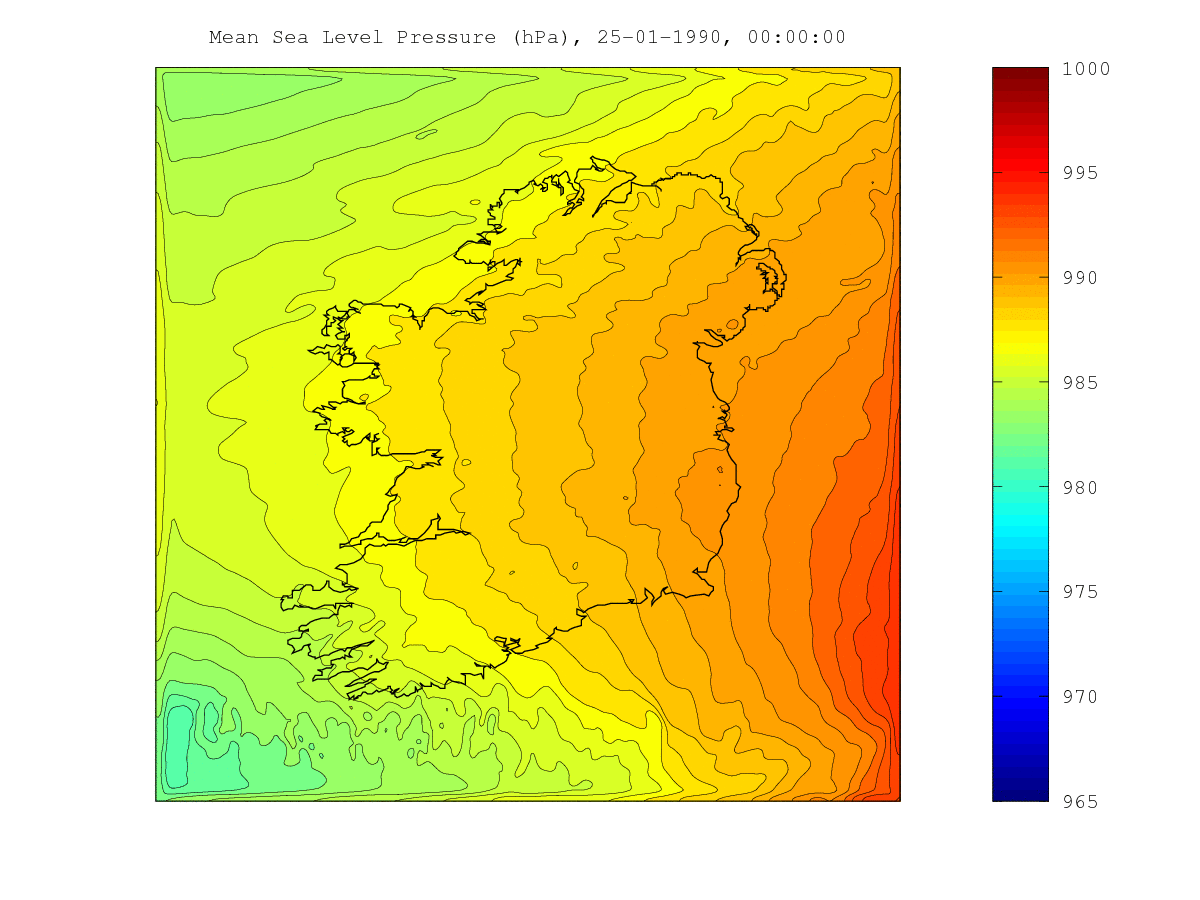Analysing the Burn's Day Storm 1990
The Burns’ Day storm, which occurred on January 25-26 1990 over North-Western Europe, is one of the strongest European windstorms on record. Although less powerful than The Great Storm of 1987, it struck the UK during daylight hours, causing a higher number of fatalities – the storm was responsible for 47 deaths in the UK alone. By comparison, Ireland was relatively less affected.
According to Met Éireann’s Monthly Weather Bulletin for January 1990), “Winds gusting up to 86 knots (99mph) along the south coast caused damage in Munster and South Leinster. A man was killed by a falling tree and two other people died in weather-related accidents in Northern Ireland.”

Figure 1: The hourly mean sea level pressure (hPa) captures the developing storm as it passes on an Eastward track over Ireland and on to Great Britain. The lowest pressure (represented in blue) in this sequence is 965 hPa. The lowest pressure recorded during the storm’s passage over Great Britain was 949 hPa.

Figure 1: The hourly mean wind speeds (knots) illustrate how close Ireland came to the destruction seen in Great Britain. The highest hourly wind speeds (represented in red) in this sequence are approximately 62 knots (115 km/h, 71 mph) and occur to the south of the country. The (near-) Hurricane-force winds eventually reached a maximum of 64 knots (119 km/h, 74 mph) in Kent and were accompanied by gusts of 93 knots (172 km/h, 107 mph) in Cornwall and Wales. It is not surprising that the Burns’ Day Storm holds the record as the costliest weather-related event for UK insurers (£3.4bn).
ICHEC has recently completed two downscaled simulations of the Irish climate over the period 1981-2016. The data from these two simulations are archived at hourly intervals and high spatial resolution (1.5km and 2km), enabling ICHEC to capture the passing of this windstorm. The animations below are taken from ICHEC’s 1.5km simulation and show the mean sea level pressure and mean wind speeds during the morning and afternoon of January 25, 1990. It is apparent that, if a more northern track and/or later arrival time had occurred, Ireland may not have been so lucky!



